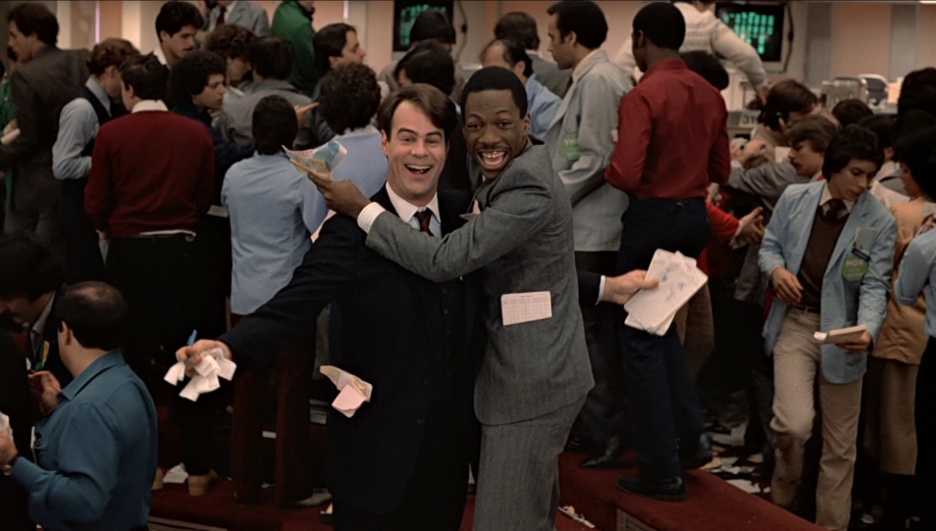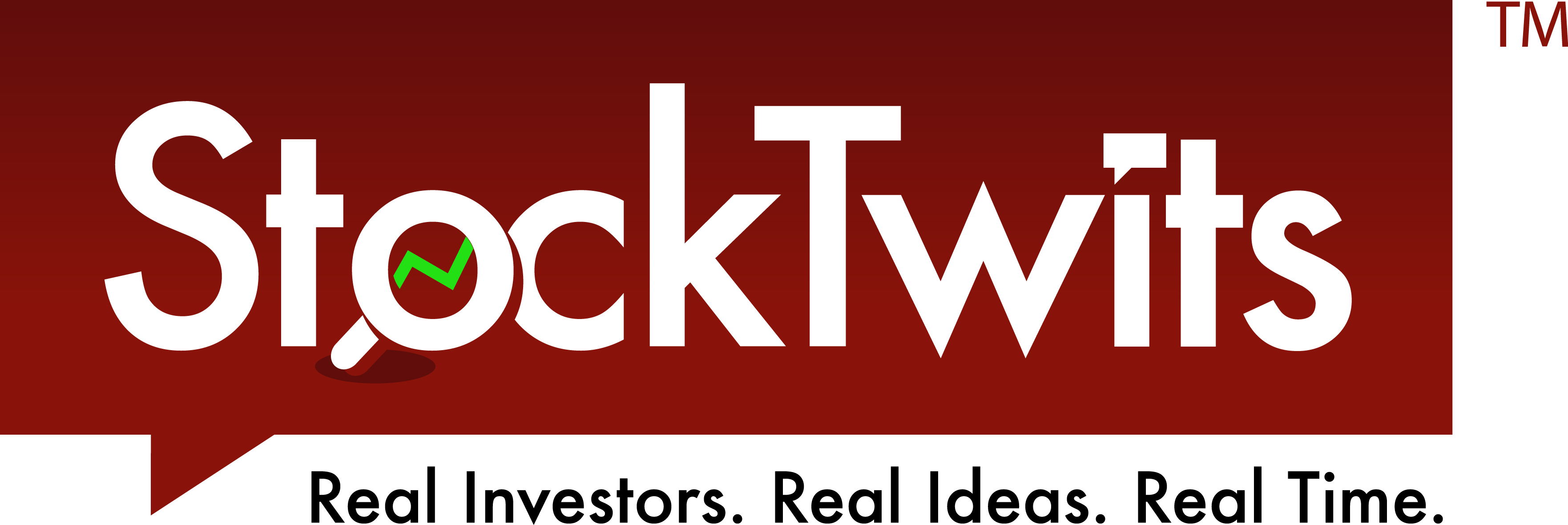Insight into the Twitter hedge fund
This is interesting. Here’s an interview with Paul Hawtin, founder of Derwent Capital Markets (the Twitter hedge fund).
 I find this compelling because it’s one of the first hedge funds that’s designed (so publicly, at least) to trade on changes in social media sentiment.
I find this compelling because it’s one of the first hedge funds that’s designed (so publicly, at least) to trade on changes in social media sentiment.
According to MoneyScience, you’ll learn:
- How the Twitter hedge funds’s signals are computer
- Operational set up and infrastructure of Derwent
- Trade generation
- The “Michael Jackson” Test: Is the Twitter hedge fund an automated black box?
- Risk Management
- Will large scale analysis of social media be part of quant trading and investing from now on?
- Who is invested in the Twitter hedge fund?
- Capacity, Target return
StockTwits growing, hiring, and portalizing
Realtime platform for stock traders to share info, StockTwits has just hired David Putnam, previously head of 800lb gorilla that is Yahoo Finance. Howard Lindzon’s firm continues to just chug along, growing traffic, rolling out products and now, recruiting seriously for growth.
According to TechCrunch:
According to Quantcast, 465,000 people are now visiting the site per month, which means the company has more than doubled its visitors since early December, when less than 200,000 were checking in to share and trade. This seems largely due to the service’s continuing evolution beyond its TweetDeck roots and creation of its own true investor ecosystem chalk full of video, news and charts — all enabled by an AIR app.
StockTwits has been pushing on a couple of fronts which should interest investors:
- investor relations: The firm is serious about attracting IR business, announcing the hiring of Chris Bullock as VP of Corporate Services.
- monetization engine: Watching the evolution of Seeking Alpha’s App Store closely, ST has rolled out its own marketplace for data products.
- portalize: This is something Putnam knows well from Yahoo but Yahoo made a massive site on curating essential information investors need. ST is growing traffic by syndicating its own content. Look for ST to become more of a destination site investor head to for more of the investment/research process.
Source:
StockTwits continues to expand, steals VP David Putnam from Yahoo Finance (TechCrunch)
StockTwit’s Lindzon pitching co hard on Bloomberg TV
CEO of StockTwits, Howard Lindzon was on Bloomberg TV yesterday talking about alternative energy companies, Japan and how StockTwits’ contextual engine is helping investors curate information that’s important to them.
Interesting quote:
Twitter is about volume and real time, reach and everywhere…StockTwits is about curation, depth
Investing in the next mashup
Technology continues to run riot over a variety of industries. Nowhere has that been felt as acutely as in the music industry. Apple’s ($AAPL) iTunes may have changed the distribution model (selling over $1B in the last financial quarter alone), basically unbundling CDs and selling individual songs a la carte.
Music, it is a changin’
But the migration from analog to digital has been accompanied by a much more profound change — the revenue model of the music industry is undergoing a transformation. Where the model was previously selling musical media (artists generally made lots of loot by selling records/tapes/CDs), the model is changing to charging for music experiences (see my recent piece on the business of Broadway and concerts).
Artists embracing this change have shifted their model to almost giving away music (or charging fans whatever they want to pay) in order to capture some funds at the next concert.
Fast Company has a very interesting rundown on Girl Talk, a biomedical-engineer-turned-DJ who makes music by mashing up others’ tunes. Simply, he takes hundreds of samples of music and weaves them together, creating cool sounds but even more enjoyable live shows. He’s putting butts in the seats because he’s providing great live value.
IPOs, Social Media and the Era of the Mashup
We’ve all read how Facebook, Twitter, and LinkedIn are gearing up to go public sometime soon. While these services seem novel, in essence, they’re all just mashups of technologies and platforms that existed before Zuck entered his first frat party (not to sound snobby, but there aren’t frats at Harvard).
Startups and traditional companies are making lots of money just copying Groupon’s model of group discount buying. Travelzoo , a decidedly Internet 1.0 company, has a Groupon-like clone that offers expiring travel deals to its email list of over 20m and that 4-month old business is rumored to be valued at $400M. Abe’s Market, an Etsy-like green marketplace founded by my friend, Richard Demb, is experimenting with live selling online with its Abe’s Live, combining the breadth of vendor-driven supply and the entertainment value of a QVC.
The future of business is the mashup. Those companies who can climb to the top of the value pyramid — by leveraging and riffing on the work done on by those along the way — will win and that’s where investors should be looking to place their bets, IPO or not.
More Resources
How Girl Talk Mashes Up the Music Biz (Fast Company)
Realtime trading data in the collective tradestream is HUGE
Softly launched a month ago, Yahoo Finance’s Market Pulse is actually a huge f’in deal. Clearly, the press — and investors — hasn’t really understood what’s going on here. And I’m not talking about StockTwits’ inclusion in the real-time stream (there are only two sources of data right now). What’s really huge here is the Covestor feed that’s showing up on stocks.
Market Pulse is a real-time feed — much like Twitter is — on specific stocks. So, whenever a trader or investor tweets or writes about a stock, it shows up here. So, everytime someone blabs about $AAPL on StockTwits, investors can follow that stream alongside the other data provided on Yahoo Finance. Is that interesting? Maybe. It is part of the real time conversation and important for hyperactive traders, I guess.
But the big deal here is what Covestor is supplying to Yahoo Finance users. As a marketplace for investment services, Covestor actually validates/verifies trading activity of its managers. In turn, Covestor supplies Yahoo’s Market Pulse with a real-time stream of trading activity — real live trades with real money behind them. Users get a feel for how large a portfolio position is (in percentage basis) and whether the investor is building or liquidating a position. Where else can you find this in real time? Nowhere.
This is all about the power of the collective tradestream. This takes everything to a whole new level.
This is a BIG deal.
Investors and Google Buzz: a threat to StockTwits?
With much fanfare yesterday (they even arranged a blizzard for much of the  U.S.), Google announced its social media offering, Google Buzz (see video below).
U.S.), Google announced its social media offering, Google Buzz (see video below).
What is Google Buzz
So, what is Buzz? I like Matthew Ingram’s description on GigaOm of the Google Buzz service:
Google’s new service looks and feels a lot like many other social media tools and networks. The primary input is a box for status updates, just like Twitter and Facebook. You can use @ replies, just like Twitter, and you can share photos and other media content easily (there’s even a photo gallery function like Facebook’s). If you’re mobile, you can give Google Buzz your current location and get comments about that location, just like Foursquare and Gowalla and Yelp. But the single biggest difference between Google Buzz and all of these other services is that Buzz is tied to email.
I think what’s interesting here is that it looks like a take on Twitter and Facebook that will allow more intellectual collaboration. And by that, I mean an ongoing, multimedia, conversation centered around specific content.
How Investors use Social Media
Beyond the back-and-forth whether Google Buzz is a big hit or flop, I began thinking how investors could use this service. When I do this (it’s a messy process, sorry), I tend to use the New Rules of Investing framework. Investors using social media tend to piggyback gurus (cloning super investors’ portfolios a la AlphaClone), crowdsource ideas (like Piqqem), participate in expert communities (like Covestor and kaChing), and use new technologies to better screen for investments.
StockTwits: What it does
We all know of the initial successes of StockTwits — it’s a good service, run by competent, thoughtful people and has created a pretty loyal (can I say, rabid?) following of users. Built on Twitter, StockTwits layers in functionality specific to traders and investors (they’ve even skinned their own Twitter software client).
StockTwits users are plugging into what I call (in my upcoming book) the Tradestream: online investors’ publicly available trading logs, complete with their thoughts and theses behind the trades and market conditions. These are short thoughts, 140 characters or less in length, and typically stand alone. It’s hard for someone participating in a conversation — let alone, someone who is merely a spectator of one — to group together thoughts into a cohesive conversation (think of how Gmail deals with emails/chats as part of a discussion).
How Google Buzz improves on Twitter/StockTwits
Google Buzz changes this. Buzz groups thoughts, however errant or short, together into an ongoing discussion. For example, assume someone posted their thesis on whether Google (GOOG) is a long or short candidate. In yesterday’s pre-buzz world, an investors would use StockTwits’ Twitter client and post, “Thinking Google’s a long here. Any thoughts?”. This would be followed by a string of responses over the next few minutes and trickling in over the next couple of hours. To view this unfurling chat, users could check the StockTwits Google Page online or access this data through a Twitter client.
But, and here’s the thing, there is nothing cohesive pulling these scattered thoughts into a conversation to help me make a decision regarding GOOG. Of course, I can scan the output — the tradestream — and piece it together myself. The power of the conversation is lost on Twitter and instead turns the stock research process into an incessant deluge of sound bites. That process of vetting ideas is especially important to investors. This is not a ding on StockTwits as much as its the product of how Twitter works.
Google Buzz changes this. And more, it inserts the tradestream into my email client, where I’m already spending my time — not a game changer, it just enables me to close one more window.
Is this something StockTwits can address? Surely. Howard Lindzon and team understand what investors/traders are looking for and are rolling out tons of functionality (have you seen StockTwits TV? Loving it, actually). It’s this focus on the investor/trader/analyst that will continue to trump Google’s more general efforts in this space.
Thoughts?













